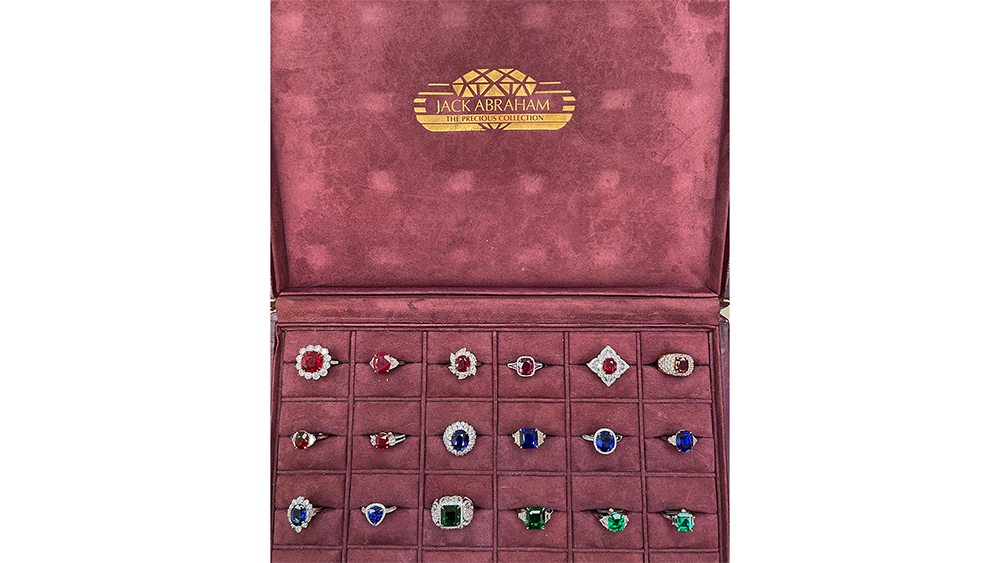Industry pioneer, precious gem connoisseur and international gem merchant, Jack Abraham is passionate about ruby, sapphire and emerald. In the business for 60 years, Mr. Abraham, was born in Afghanistan and studied in Israel and England before moving to the U.S. in 1962 to study aerodynamics and space exploration. While waiting to receive university exam results from England, he worked with his brother who was a gemstone dealer. Once he got started in the precious gem business, Mr.Abraham was hooked and he never looked back. He has spent his career searching the world for the most magnificent gemstones — specifically rubies, sapphires and emeralds —and educating retailers, dealers, collectors and gemstone aficionados on the ins and outs of buying precious gems. Based in New York City, he curated “Jack Abraham — The Precious Collection” of exceptional colored gemstones and founded his company Precious Gem Resources. His motto is “Professionalism, Trust and Integrity”. With six decades of experience in the business, Mr. Abraham knows that there are many variables when considering a colored gemstone purchase that go beyond liking the color. To help you get started with your acquisition, Mr. Abraham offers a few pointers on what to look for when buying a precious colored gemstone.
COLOR (primary, secondary and modifiers)
A difference in color between gems can greatly change the price of a stone. If all factors are equal — weight, cut, clarity — the color and whether or not the gem has been enhanced, may cause the price to vary considerably. There are two factors to consider when examining color: Purity and tone. “Color is judged by visible purity of the primary and secondary colors. For example, rubies may have orange, pink or purple modifiers. There may also be negative modifier colors such as gray or brown. All of those color factors will have an impact on the price of the stone,” explains Mr. Abraham.
TONE & SATURATION
Tone refers to how light or dark a stone appears, while saturation refers to the depth of color. When a gem is too light, or too dark, it may affect its desirability and value. “A pastel blue sapphire can be beautiful and pleasing to the eye, but it will never command the same price as a sapphire with an intense blue color,” says Mr. Abraham, “These variations in lightness or darkness are tonal references that can make a significant difference in the price of a gem.”
CLARITY
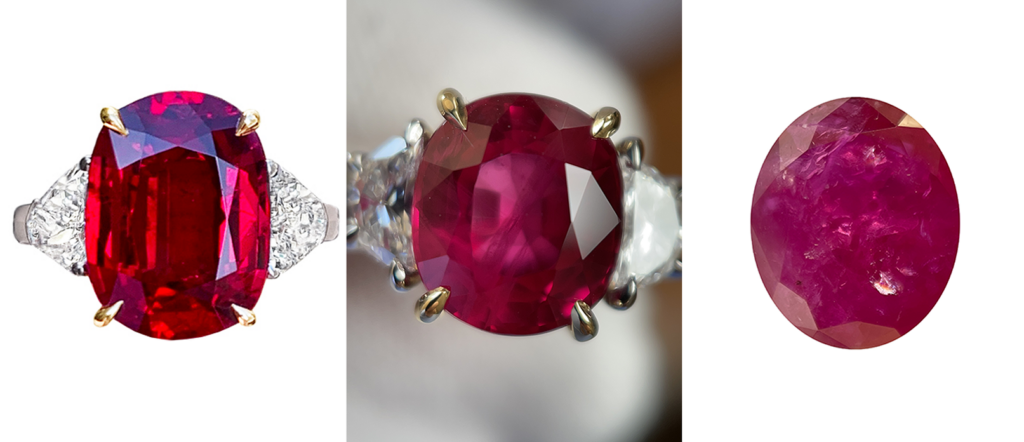
Clarity refers to internal inclusions and surface blemishes. The less of either of those two features the better quality the stone. “The type and number of inclusions can vary dramatically with the particular type of gem. Minor inclusions and surface characteristics may be commonly present even in the finest ruby, sapphires and emeralds. Sapphires are the cleanest, least included of the precious gems, followed by rubies and then by emeralds. Unlike diamonds, flawless colored gems are almost nonexistent,” comments Mr. Abraham
SIZE
Size is generally the carat weight of a gemstone. The term carat is derived from the word “carob”. Historically carob seeds, with their fairly consistent weight, were used to measure the size of gem. As weight methods improved, a carat was defined as one-fifth of a gram — meaning that there are five carats in a gram. Mr. Abraham explains further that there is more to size than weight, “Rubies and sapphires, a form of corundum, are denser than diamond. It means that a 2-carat ruby or sapphire cut in an identical shape and form as a 2-carat diamond will look smaller than the diamond of the same carat weight.”
COUNTRY OF ORIGIN
Country of origin has historically dominated demand and dictated market prices for ruby, sapphire and emerald. Burma for rubies, Kashmir for sapphires and Colombia for emeralds have emerged as the most important origins in the colored gemstone marketplace. Country of origin has an enormous impact on the price of colored gemstones. Over the years, gemstone origins have become more complicated as new gemstone sources have been found. “A gem quality Burma ruby with very similar visual characteristics to rubies from other sources can fetch more than 10 times the price in the international market and a Kashmir sapphire as much as 8 times more than stones from other sources,” states Mr. Abraham. The only way to be really sure of country of origin is to have a report(s) from a reputable gemological laboratory verifying origin.
CUT
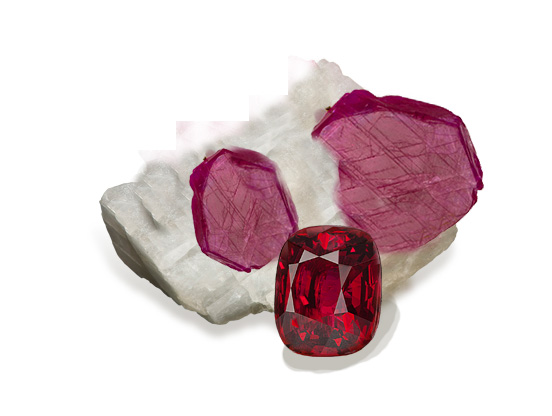
Cut is the positioning of facets on a stone. Proportions and finish are two important factors in determining a “good cut”. Some cutters who cut rubies and sapphires, traditionally try to retain as much weight as possible by cutting close to the shape of the rough gem. Symmetry and good proportions are secondary to weight retention and are deemed less important in colored stones than in diamonds. Proportion is how even and pleasing the overall shape of the stone is, with depth and symmetry taken into consideration. Finish is defined as the quality of polish and symmetry of the gemstone.
SHAPE
According to Mr. Abraham, in the world of ruby and sapphire, most gems will be cut into an oval or a cushion shape with a visually pleasing relationship between the length and width of the stone. A cushion shape is basically a rectangle with rounded corners. Emeralds are commonly cut in a rectangular faceting style which is a traditional look. With the right proportions these are elegant shapes and generally maximize the potential beauty of the material. “Beyond these basic shapes, there are many options,” reveals Mr. Abraham. “Some are trendy and others are more traditional. Personal taste plays a role in the selection process.”
DICHROISM
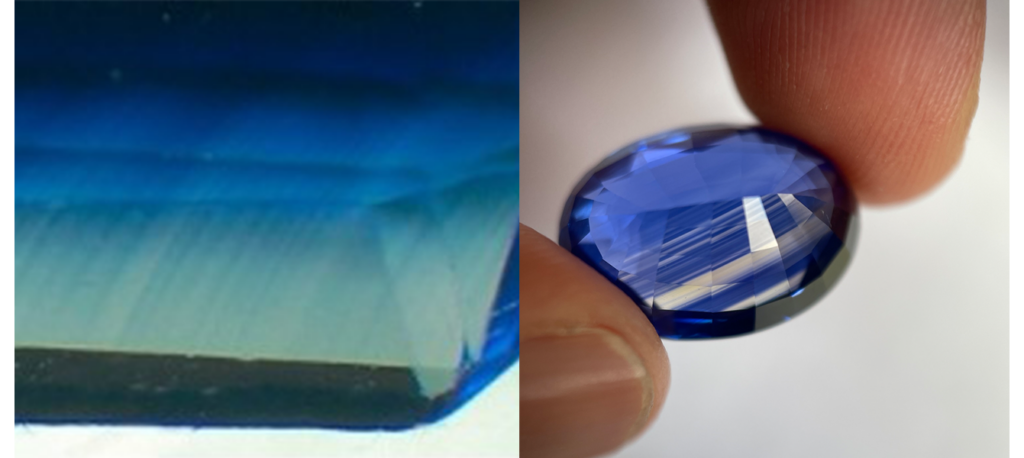
Dichroism, refers to a “two color” effect that in some cases can be visible even to an untrained eye in any ruby, sapphire or emerald. Certain cutting orientations in these gems provide a very pure color, but other cutting directions can produce a visually distracting two-color effect. Frequently, the shape of the rough gem will dictate to the gem cutter how best to minimize the two-color effect. “The less obvious the second color, the more attractive and desirable the gemstone,” says Mr. Abraham.
COLOR ZONING
Color zoning is when a stone has patches, or bands, of color that are uneven and have varying degrees of intensity. When gem crystals are forming in the earth, various changes in temperature, pressure or the presence of other elements, can change the chemistry of the stones growth process. These changes may result in uneven concentration of color in the stone. Gemstone cutters make every effort to reduce the visual impact of these color zones. “Color zoning is much more common in sapphire and much less common in rubies and emeralds,” notes Mr. Abraham. “Visibility of the color zoning in the normal viewing position of a gem can have an important impact on both desirability and price.”
TEXTURE
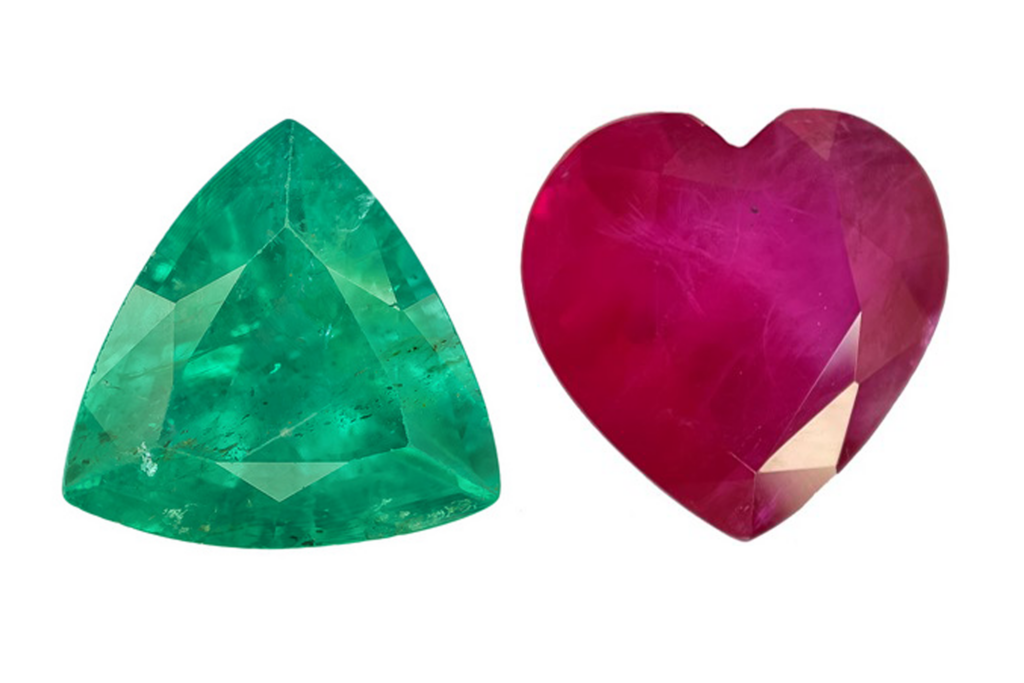
Texture refers to minute, finely disbursed inclusions, or their equivalent which interfere with the passage of light and gives the stone a dull “sleepy” appearance with no liveliness. Generally gemstones with little to no texture are most desired. However, in the case of Kashmir sapphire, it is the faint microscopic rutile threads that produces the “velvety effect” and enhances the beauty and value of a classic sapphire from that region. If the effect is too pronounced it will decrease the value of the stone. “The most important consideration is whether or not the ‘texture’ adds or detracts from the visual appeal of the gem,” comments Mr. Abraham.
ENHANCEMENT
Today, almost all colored gemstones are enhanced to bring out their beauty. Rubies and Sapphires are heated to remove impurities and improve their color. For color to improve, the stone must have inherent qualities that heating brings out permanently. Emeralds, which tend to have fissures, are filled with oil or resin to improve their clarity. “Gems that are natural color with no enhancements are the most highly desired and valuable,” concludes Mr. Abraham.
Select pieces from Jack Abraham — The Precious Collection can be found on Jewelers Circle Pro.
Authored by Amber Michelle
